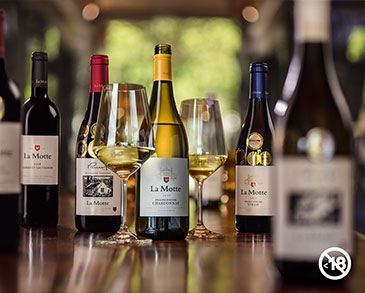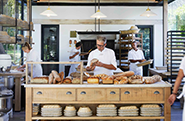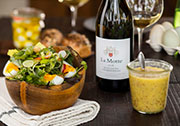
Yes, it might sound too early, but traditionally September is the month to bake your Christmas or fruit-cakes. These indulgent cakes perform best after a rest of about two months during which the flavours integrate with each other and the cake ripens into the moist wonder often written about.
Pierneef à La Motte’s Culinary Consultant and Food Historian, Hetta van Deventer-Terblanche, shares the history behind these traditional cakes and why they played such an important role in the cuisine of the Cape Winelands.
For hundreds of years we have associated fruit-cake with special occasions such as weddings and Christmas – in a Cape recipe book from the eighteenth century, for instance, appears a recipe for a “Christmas pudding”.
Initially, prunes were used instead of raisins and currants, animal fat instead of butter, while the fruit-cake or pudding was steamed in a cloth because of an absence of ovens. Furthermore, cakes and puddings were not saturated with a sauce – today it is a popular practice. The sauce was served separately and custard or brandy sauce would be typical sauces for serving with fruit-cake. The use of spices was common in a large variety of cakes and other baking. Today, spices are used very sparingly in cakes – when used, mostly as a pinch here and there.
Marzipan, consisting of almonds and egg-white, traditionally used as a covering for wedding fruit-cakes, is an antique delicacy that was known before the time of Christ. Today, unfortunately, many people are only familiar with a cheap imitation that does not even contain almonds, but is made with the use of synthetic flavourings and even the cores of apricot-stones. No wonder so many people shudder at the thought of marzipan (or what they regard as marzipan).
Baking a fruit-cake is expensive and time-consuming, but if you feel you have the energy and start well in time, there will be a great reward. When Christmas finally arrives you can relax, and spoil your guests with this traditional favourite.
A few tips for successful baking:
- Bake your fruit-cake well in time for Christmas – it will just be so much tastier after “maturing” for a month or three (especially if sprinkled with brandy now and then).
- Soak the dried fruit in a liquid overnight.
- Line your baking-pan well with foil and wrap three layers of brown paper around the sides of the baking-pan to avoid burning the sides of the cake before it is fully baked. Cover the top and bottom with foil and brown paper.
- Bake the cake at low heat, on the bottom shelf of the oven.
Follow our recipe for a special traditional treat this year and for a modern twist, serve it with La Motte Cabernet Sauvignon. The elegant character of the wine beautifully complements the intense spicy and fruity flavours of a Christmas cake.
Christmas Cake Recipe
For one large fruit-cake
You need a deep baking-pan, 28 cm in diameter, the bottom and sides lined with four layers of wax-paper.
Preheat oven to 150 ºC
For the fruit mixture
250 g dates, cut into small pieces
50 g soft, dried apricots, quartered
50 g glazed pineapple, cubed
250 g fruit-cake mixture
100 g crystallised mixed rind, cut into small pieces
250 g melon preserve, cut
250 g green-fig jam, cut
500 g red glazed cherries
125 ml brandy
Mix all the fruit ingredients together in a large bowl and pour brandy over.
Cover with cling-wrap and allow to soak for at least a day.
For the batter
250 g soft butter
375 ml castor-sugar
4 large eggs
5 ml vanilla essence
500 ml cake flour
2,5 ml salt
500 g pecan-nuts, chopped
250 – 350 ml brandy
Cream the butter, gradually add the sugar, then beat until light and creamy.
Beat in the eggs one by one, then add the vanilla essence.
Should the mixture tend to separate, a dash of the flour can be added.
Sift the dry ingredients and add to the butter mixture.
Fold the prepared fruit and the nuts into the mixture until all the ingredients are evenly spread.
Scoop mixture into prepared baking-pan, even out the top, place a double layer of baking-paper over and tighten on the sides, making sure that steam can escape.
Bake for two hours.
After 2 hours, reduce temperature to 100º C and bake for a further 30 minutes.
Remove from the oven and leave the cake in the baking-pan for 5 minutes.
Spread half the brandy evenly over the cake.
Turn out the cake and spread the rest of the brandy over the bottom.
Place the cake with the top up on a cooling grid.
Store in an air-tight container – can be sprinkled weekly with more brandy.
The cake can be kept for up to six months.











